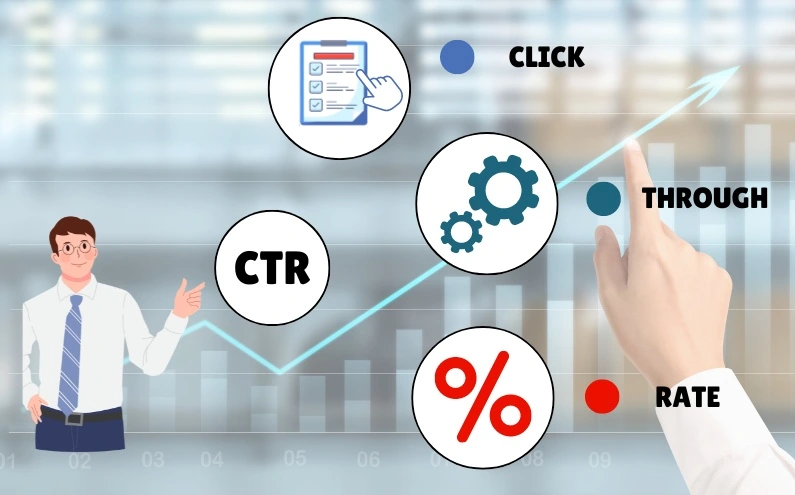Click-through rate (CTR) is a key metric in digital marketing that measures the percentage of users who click on an ad or link compared to those who see it. A higher CTR indicates that your content resonates with your audience, making it an essential factor for improving engagement and driving conversions. Here’s a closer look at what CTR is and why it matters.
1. What is Click-Through Rate (CTR)?
CTR represents the ratio of clicks to impressions for an ad or link.
- Formula: CTR = (Clicks ÷ Impressions) × 100
- Purpose: It shows how well your ad or link performs in capturing user interest.
- Relevance: A higher CTR suggests your messaging and targeting are effective.
2. Why CTR is Important in Digital Marketing
CTR provides critical insights into the performance of your campaigns.
- Measures Engagement: Tracks how often users interact with your ads or links.
- Indicates Relevance: Higher CTRs suggest that your content aligns with audience expectations.
- Impacts Quality Score: Platforms like Google Ads reward high CTRs with lower costs and better ad placement.
3. How CTR Affects Campaign Success
A strong CTR can lead to better outcomes across your marketing efforts.
- Increased Conversions: More clicks mean more opportunities for conversions.
- Improved ROI: Higher engagement reduces cost-per-click (CPC), maximizing your ad spend.
- Better Search Rankings: High CTRs in organic results signal relevance, improving rankings.
4. Factors That Influence CTR
Several elements contribute to the success of your click-through rate.
- Ad Copy: Engaging and clear messaging encourages users to click.
- Call-to-Action (CTA): Strong CTAs guide users toward taking action.
- Targeting: Precise targeting ensures your ads reach the right audience.
- Design and Visuals: Attention-grabbing visuals can significantly improve CTR.
5. Industry Benchmarks for CTR
Understanding average CTRs helps gauge your campaign performance.
- Search Ads: Typical CTRs range from 3% to 5% across industries.
- Display Ads: Lower average CTRs, around 0.5% to 1%, are common due to broader reach.
- Email Campaigns: Open rates and CTRs vary, with 2% to 5% considered good for most industries.
6. Strategies to Improve CTR
Optimizing CTR requires a combination of creativity and strategy.
- Refine Headlines: Use compelling headlines that address user pain points or interests.
- Personalization: Tailor ads or content to meet audience needs and preferences.
- A/B Testing: Experiment with different ad copy, visuals, and CTAs to find what works best.
- Leverage Keywords: Use relevant keywords to make ads more discoverable and engaging.
7. Measuring and Tracking CTR
Consistent monitoring helps you identify trends and optimize campaigns.
- Analytics Tools: Use platforms like Google Analytics or ad dashboards to track CTR.
- Segmentation: Break down CTR data by audience, device, or location for deeper insights.
- Benchmarking: Compare CTRs across campaigns to identify high-performing ads.
8. Common Mistakes That Lower CTR
Avoid these pitfalls to maintain a healthy click-through rate.
- Generic Messaging: Ads that don’t resonate with the target audience lead to low CTRs.
- Overuse of Keywords: Keyword stuffing can make ads appear irrelevant or spammy.
- Ignoring Mobile Users: Non-mobile-friendly ads can miss a significant portion of your audience.
Click-through rate is a vital metric for measuring the effectiveness of your digital marketing campaigns. By focusing on engaging ad copy, strong CTAs, and precise targeting, you can improve CTR, drive more traffic, and achieve better results.Want to improve your CTR and maximize your campaigns?Contact us today for tailored strategies to improve your digital marketing efforts.

